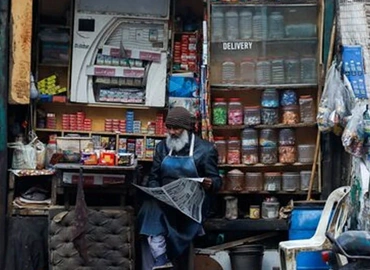Introduction
This Country Update Note examines the constraints faced by Pakistan’s micro, small and medium-sized firms in exporting to Chinese market. It informs on the composition of Pakistan’s exports, distribution along firm size and across sectors, tariffs and non-tariff barriers and the use of trade preferences under Pak-China Free Trade Agreement (FTA). The study uses a mix methodology. It analyses firm-level export data for the recent period (from 1-1-2017 to 31-12-2017). In addition, it draws upon the interviews with, China-Pakistan Centre of Excellence_ a leading research institution_ and 15 exporting firms that shipped to Chinese market during the study period.
The analysis finds that China is Pakistan’s third largest exports market. It sources all sorts of products from Pakistan with a major share of textiles, minerals and fruits and vegetables (see Table 2). These exports are hauled by large firms and the contribution of micro, small and medium-sized (MSME) exporters is relatively limited. However, all key constraints to export growth by small firms_ such as lack of production of value-added products, inability to meet regulatory requirements and poor logistic network to transport goods from farm and factories to gateway ports_ pertain to supply side.
Interviews with a leading think tank, China-Pakistan Centre of Excellence, and with private sector firms point to the prevalence of high tariffs as well as a battery of non-tariff measures (NTMs) in accessing Chinese market. Most of the firms are however oblivious of the fact that these NTMs is not specific to China. The use of sanitary and phyto-sanitary (SPS) requirements as well as technical barriers to trade (TBT) has increased overtime, both in developed and developing countries, due to rising consumer concerns about food safety and environmental protection, and China is not an exception.
The tariff preferences accorded to Pakistan under the Pak-China FTA in 2007 have gradually eroded as China later signed many deeper and comprehensive trade agreements with other regional economies, whereas Pakistan did not focus on the growth of preferential trade with other economies. Moreover, Pakistan’s firm could not utilize most of the trade preferences accorded in the FTA as these high value-added products covered in the concession lists are not produced in the country. Despite these challenges, trade with China has increased manifolds since the implementation of FTA. However, in absolute terms, the growth in exports is smaller than that for imports. Although exports have also increased around five folds, from $300 million to around $1.5 billion, Pakistan started from very low baseline.
Pakistan’s small production capacity, inability to upgrade export basket and large domestic demand has drawn attention towards widening bilateral trade deficit with China. This deficit reflects underlying weak macroeconomic fundamentals and structural issues faced by Pakistan’s economy. In addition, the deficit increased mainly because of large imports of machinery and equipment for the CPEC-related projects, but it has started to narrow down in the recent years.
In the context of China-Pakistan Economic Corridor (CPEC), a number of initiatives are under way. With new roads and ports, transportation infrastructure has been improved considerably. Energy shortage has also been overcome to a large extent. Now Special Economic Zones (SEZs) are being set-up in different parts of the country. All these developments would provide ample opportunities for SMEs to become partners in Global Value Chains (GVCs).
This Note is structured as follows. Section 2 explores the firm-level export data and examines the role of tariff concessions under the Pak-China FTA. Section 3 presents the perspective of private sector stakeholders and compiles the list of NTMs faced by Pakistan’s firms in Chinese market. Section 4 concludes.





